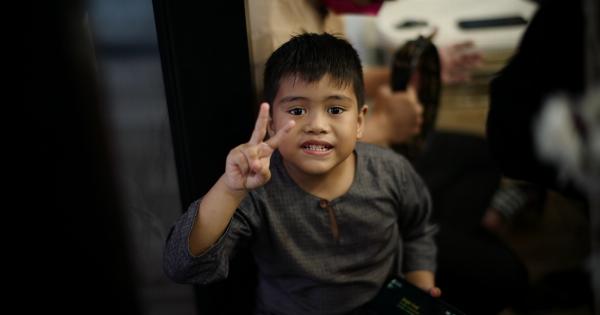Conflict is a part of human interaction. It can arise in different situations and take various forms. It often occurs when there is a disagreement or difference of opinion between two or more individuals or groups.
Conflict can be overt or covert, verbal or physical, and sometimes, it may not be visible at all. Identifying the symptoms of conflict can help in addressing the issue and prevent it from escalating into a larger problem. In this article, we will discuss the symptoms of conflict and how an image-based approach can help in identifying them.
1. Negative Body Language
Body language is an important aspect of communication. When people are in conflict, they may demonstrate negative body language. They may cross their arms, avoid eye contact, or slouch.
Negative body language can indicate defensiveness, discomfort, or disinterest. For example, if someone is in a meeting and they cross their arms, it can indicate that they are not receptive to the ideas being discussed.
2. Increased Tension
Conflict can increase tension in individuals. They may become edgy, restless, or irritable. Increased tension can also manifest in physiological symptoms such as sweating, trembling, or palpitations.
These symptoms may not be visible, but they can manifest in other ways. For example, a person who is experiencing increased tension may be less effective in their work.
3. Aggressive Behavior
Aggressive behavior is a clear symptom of conflict. It may manifest in verbal or physical forms. Individuals who are in conflict may yell, use harsh language, or engage in physical violence.
Aggressive behavior can be dangerous and should be addressed immediately. Organizations and individuals should have policies in place to deal with aggressive behavior.
4. Withdrawal and Isolation
Some individuals may withdraw or isolate themselves when they are in conflict. They may stop attending meetings, avoid social gatherings, or cut off communication.
Withdrawal and isolation can be a sign of avoidance behavior, which can further exacerbate the conflict. It is essential to reach out to individuals who are withdrawing and try to resolve the conflict.
5. Increased Stress Levels
Conflict can increase stress levels in individuals. Long-term exposure to stress can lead to various physical and mental health problems. Increased stress levels can also impact the productivity and effectiveness of individuals.
Organizations should have mechanisms in place to manage stress levels and prioritize the well-being of their employees.
6. Gossiping and Rumor Mongering
Gossiping and rumor mongering are symptoms of conflict. Individuals who are in conflict may spread rumors or gossip about each other.
It is important to identify and address these activities, as it can damage relationships and create a toxic work environment. Organizations should have clear policies against gossiping and rumor mongering.
7. Lack of Cooperation
Lack of cooperation is a symptom of conflict. Individuals who are in conflict may refuse to cooperate with each other. This behavior can impact the productivity and effectiveness of the organization.
It is important to address the lack of cooperation and try to resolve the conflict in a constructive manner.
8. Change in Work Habits
Conflict can lead to a change in work habits. Individuals may become less productive or avoid certain tasks or responsibilities. Change in work habits can be a sign of avoidance behavior and can impact the overall productivity of the organization.
It is essential to address the change in work habits and try to find a solution to the conflict.
9. Increased Absenteeism
Conflict can result in increased absenteeism. Individuals who are in conflict may take more sick days or other forms of leave to avoid the work environment. Increased absenteeism can impact the performance of the organization.
It is important to address the conflict and create a positive work environment for all employees.
10. Lack of Trust
Conflict can erode trust between individuals or groups. Lack of trust can lead to a breakdown in communication and cooperation. It is important to address the lack of trust and try to rebuild relationships in a constructive manner.
The Benefits of Using an Image-based Approach
An image-based approach can be a valuable tool in identifying the symptoms of conflict. Images can provide a visual representation of the symptoms of conflict, which can help individuals and organizations to understand and address the issue.
Images can also be used to facilitate communication and help individuals to express their emotions and feelings in a non-threatening manner. An image-based approach can be particularly useful in cross-cultural settings where language barriers may exist.
Conclusion
Conflict is a part of human interaction, and it can arise in different situations and take various forms. Identifying the symptoms of conflict can help in addressing the issue and prevent it from escalating into a larger problem.
An image-based approach can be a valuable tool in identifying the symptoms of conflict and facilitating communication. Organizations and individuals should have mechanisms in place to manage conflict and prioritize the well-being of their employees.































